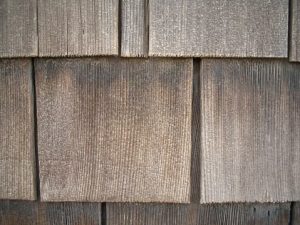Cedar shake roof installation and maintenance basics
Cedar shake roof installations are popular because of their aesthetic value, durability and storm resistance. Cedar wood also serves as a natural insulator, making shake roofs an energy efficient option. Shake roof installation and material costs can, however, be very high when compared with other options. Still, shake roofs add resale value to your home and create a beautiful aesthetic when finished and well-maintained.
If you’re trying to find a roofing contractor to install cedar or synthetic shakes, then here’s what you need to know:
Shake roof ratings and finishes
 In a 2011 report, the United States Department of Agriculture (USDA) detailed the Cedar Shake and Shingle Bureau’s (CSSB) guidelines and standards for shake roofs and shake roof installation. Any reputable roofing contractor will abide by these rules and suggestions, which were implemented to maximize the usable life of your shake roof.
In a 2011 report, the United States Department of Agriculture (USDA) detailed the Cedar Shake and Shingle Bureau’s (CSSB) guidelines and standards for shake roofs and shake roof installation. Any reputable roofing contractor will abide by these rules and suggestions, which were implemented to maximize the usable life of your shake roof.
There are several ”grades” for shakes—premium, number 1, number 2, etc.—which are separated based on several characteristics including physical attributes and fire ratings. For instance, only Premium and number 1 cedar shakes are ”pressure-impregnated” with the proper fire retardants to meet certain building codes. The CSSB does not approve of spray-on fire retardants, as they will likely wash away. In addition, many top-rated shakes are factory-finished with water-repellent preservatives (WRPs) to increase the longevity of your shake roof.
Shake roof installation
Shake roof installation usually begins with ensuring the roof deck is outfitted properly for sheathing. It is typically recommended that roofers apply cedar or synthetic shakes to ¾” thick plywood for better nail performance. Then the USDA recommends coating the entire roof deck with 30-pound roofing felt. A layer of felt will be folded over the top of the ridge—or where the two planes of your roof meet. Another layer will be interlaid with the cedar or synthetic shakes.
An experienced roofing contractor will know to start at the lower edge of the roof with the starter course or row. They will line the starter course up exactly with the edge of the roof or let it hang ½” off the edge. Depending on the moisture content on the day of installation, the roofers will space each shake 3/8” to 5/8” apart, leaving more room in low-moisture conditions and less room in high-moisture conditions. Once your roofer reaches the ridge, they will saw any excess length off the top of the last course of shakes. Then, they will line the ridge cap with ridge shakes, which are shaped like a ’V’ in an overlapping pattern. Typically, the shakes will be factory-finished. Other times, the roofer might need to finish the shakes on the job site. Either way, you can rest assured that your shake roof is durable and weatherproof.
Shake roof repair, maintenance and cleaning
Shake roofs require regular shake roof repair and maintenance in order to prevent mold, algae and mildew growth. The USDA suggests that cedar shakes become brittle with age. In order to prevent growth and brittleness, you will need to have an experienced roofing contractor clean and re-finish your shake roof regularly.
The added value of a quality shake roof contractor
If you’re thinking about installing a cedar shake or you need to repair your existing one, then you need to choose a roofing contractor who is experienced in proper installation and repair techniques. That’s why you should consider Wildwood Roofing & Construction. We’ve been installing, maintaining and repairing cedar shake roofs years. And, we’re proud of every shake roof installation we’ve performed throughout the years. Maybe that’s why our clients have such good things to say about us.
So, whatever your roofing needs, schedule a cost- and obligation-free consultation with us.

